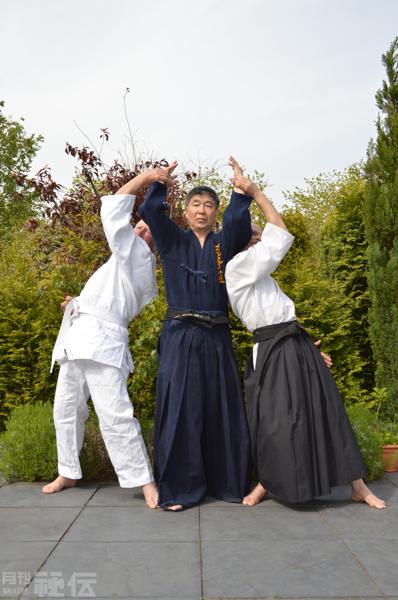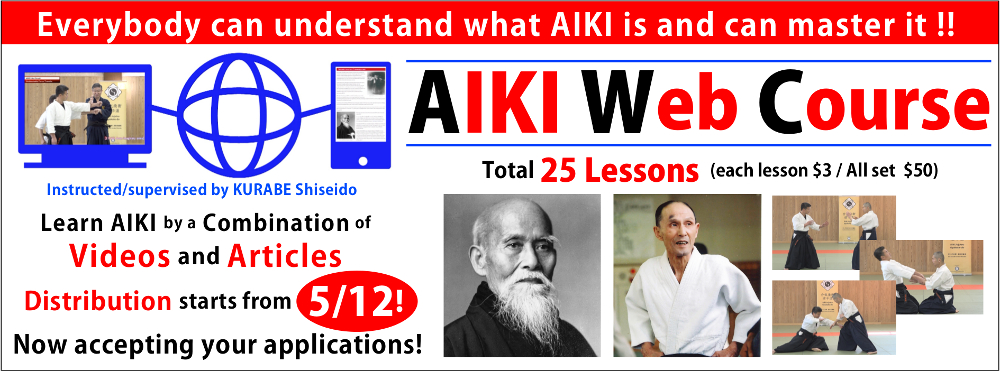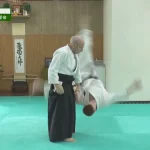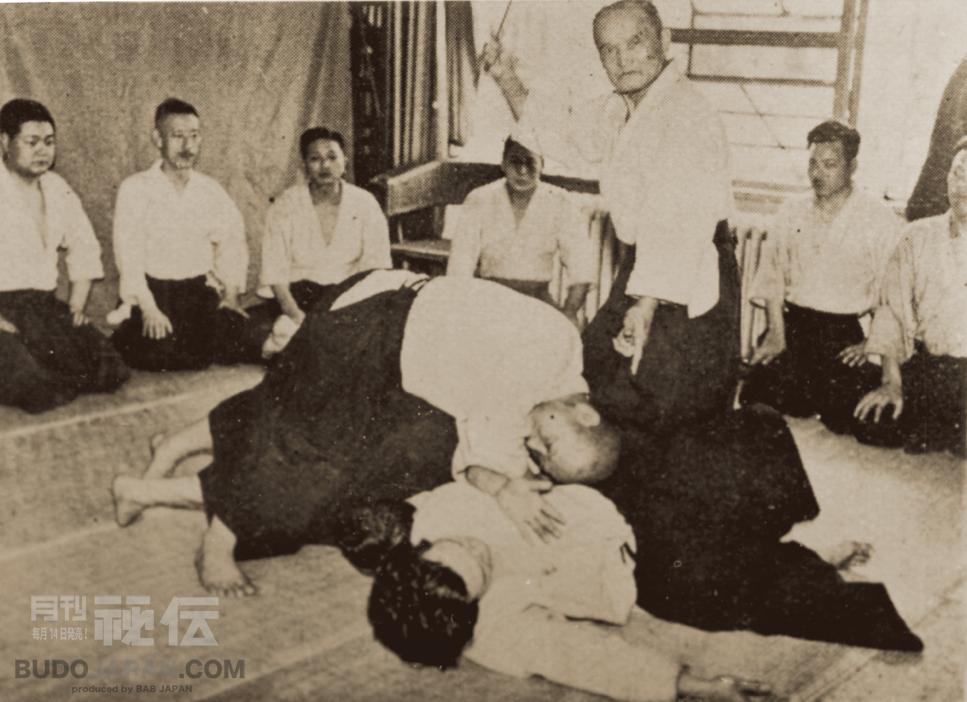
Prologue
When I was teaching my Gyakute-do Aiki Jujutsu in Rotterdam, one Dutch man joined to my course. He himself introduced to me as a Jujitsu master with 5th Dan of Aiki Jujutsu. He explained that he was acknowledged his 5th Dan by the Aiki Jujutsu federation in Germany and he has own Jujitsu school in south of the Netherlands. What was my surprise he could not do any Aiki technique and just had kept taking video of my instruction and performance all the training hours. After 4-5 months when he though he took all Kata in video he suddenly stopped attending to the class. And after a year I found him on Youtube that he was performing our Gyakute-do Kata with the explanation that he is showing his own Aiki technique.
This is not only one case but I often encountered same cases during my 27 years Gyakute-do teaching in Europe. I normally teach very important deep knowledge to everybody who want to learn from me and unfortunately not all are honest and sincere like that person. But I do not mind and keep teaching my students sincerely and fairly which results to get more wonderful students around me.
Aiki which is now becoming popular worldwide
Like that guy so many Budo fun now in Europe know and yearn for Aiki although they do not know what exactly it is. I know there is an Aiki Jujutsu federation in Germany which issues their certificate so easily if somebody has Dojo and joins the federation with his students. They issue higher Dan degree as a return. People like the name Aiki because it just sounds more sophisticated and high level system so they name their techniques Aiki just as a “decoration”. By the way, there is only one positive thing that they do not misspell it as Aiki Jujitsu but they spell it as Aiki Jujutsu in correct way for this case. This is because they got the name Aiki Jujutsu by writing but not by verbal communication which happened for the case Jujutsu 100 years ago. It does not surprise me anymore that they even do not know the difference between Jujutsu and Aiki Jujutsu or even Aiki Jutsu. Recently one of my Budo friends in Poland introduced me one person who is studying Japanese Budo as his major work as an associate professor. I read one of his paper about Jujutsu, Aiki Jujutsu and Aiki Jutsu with a big interest. But after reading his paper I got a big disappointment to know that his knowledge about Japanese Budo is too poor as a researcher. He just copied what is written in some big organization’s advertisement which many of Budo-ka in Japan do not take it as true.
What is Aiki Jujutsu and Aiki Jutsu
For this definition there are several different ideas in Japan and it is not exactly fixed yet but I dare explain the difference as following. What disappoints me a lot is the fact almost all European Jujutsu-ka do not know that difference at all and they deem those two Aiki Jujutsu and Aiki Jutsu are same. Even in scientific paper issued by European authorities as professors, they write those are same based on their idleness of researching activity.
Jujutsu : Apply mainly lever theory to such static weak point of human body as elbow, wrist joints to control the opponent efficiently
Aiki Jujutsu : Apply certain motion to the human body where it is sensitive to such motion to unbalance the opponent. So this case we use dynamic weak point of human body.
Aiki Jutsu : Apply unordinary muscle operation controlled by mind to unbalance and control the opponent.
Here I provide an example to show the difference by actual techniques of each system. Please watch the video.
by Jujutsu
Tori pushes down hard Uke’s elbow while he bents Uke’s wrist strongly to push down Uke’s body
by Aiki
Jujutsu Tori moves his Shuto around Uke’s elbow joints while Tori keeps bending Uke’s wrist, no need to put big power onto Elbow nor wrist.
by Aiki jutsu
Tori transfers his power to Uke’s Tanden (abdomen) via Uke’s elbow while he holds Uke’s wrist. Tori never pushes Uke’s elbow hard. This can be done by mind controlled power transfer and only a very small pushing power is required, say 1/10 of Jujutsu.
Histry of Aiki
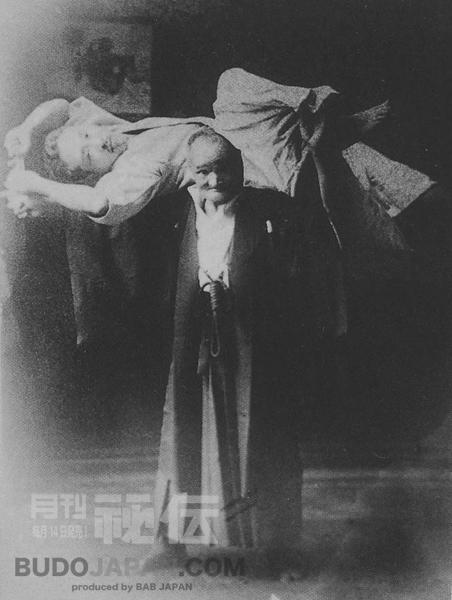 We can go back the history of Aiki in 16th century. There is a clear evidence that the founder of Yagyu Shinkage-ryu Ken Jutsu already applied Aiki to its techniques. And during Edo époque when people could enjoy peaceful life without war for around 250 years, several Budo masters mainly in Ken Jutsu field published their research result about Aiki, naming the exact word as Aiki 合気. But we must wait till 20th century when master Sokaku TAKEDA 武田惣角先生developed Aiki techniques as a system. He mastered several Ken Jutsu styles and could notice the essence of Aiki which was hidden in those Ken Jutsu techniques. He had developed those Aiki techniques as a system and he started teaching his system which was named as Daito-ryu 大東流 to his students in around 1898. So he made a big contribution to spread the concept of Aiki in the Budo society of Japan which nobody could have done before him.
We can go back the history of Aiki in 16th century. There is a clear evidence that the founder of Yagyu Shinkage-ryu Ken Jutsu already applied Aiki to its techniques. And during Edo époque when people could enjoy peaceful life without war for around 250 years, several Budo masters mainly in Ken Jutsu field published their research result about Aiki, naming the exact word as Aiki 合気. But we must wait till 20th century when master Sokaku TAKEDA 武田惣角先生developed Aiki techniques as a system. He mastered several Ken Jutsu styles and could notice the essence of Aiki which was hidden in those Ken Jutsu techniques. He had developed those Aiki techniques as a system and he started teaching his system which was named as Daito-ryu 大東流 to his students in around 1898. So he made a big contribution to spread the concept of Aiki in the Budo society of Japan which nobody could have done before him.
There is only one pity misunderstanding that some of Daito-ryu people nowadays believe that Aiki was originally created by Sokaku TAKEDA sensei and the name of Aiki, only they i.e. Daito-ryu people can use. And when they hear the non Daito-ryu people use the name Aiki or explain Aiki techniques, they automatically start claiming them strongly. It is really pity and disappointing.
Here I show one evidence that the name Aiki and its concept/techniques are not original of Sokaku TAKEDA sensei. The book titled Aiki no Jutsu合気之術 was published in 1892 and at that time Sokaku TAKEDA sensei did not start teaching his system nor using the name of Aiki for his system.
I was informed about this book by Mr. Christian Flament, a French Bujutsu researcher. He has a profession as a policeman who is patrolling the most dangerous area in Paris everyday and because he needs to protect himself, he has been learning Aiki Jujutsu from master Makoto KOJIMA小嶋誠先生 of KISHIN Juku氣慎塾. I am very glad to know there is such a serious Bujutsu researcher out of Japan as Mr. Flament. His sincere attitude towards Bujutsu cannot be compared with the one of the formerly mentioned associate professor. He reminds me another serious Bujutsu researcher Mr. Steven Vaes in Belgium who was my Gyakutedo Deshi (student) and so suddenly passed away by car accident 5 years ago. His room was filled with hundreds of Bujutsu related books and his knowledge was much deeper and wider than mine.
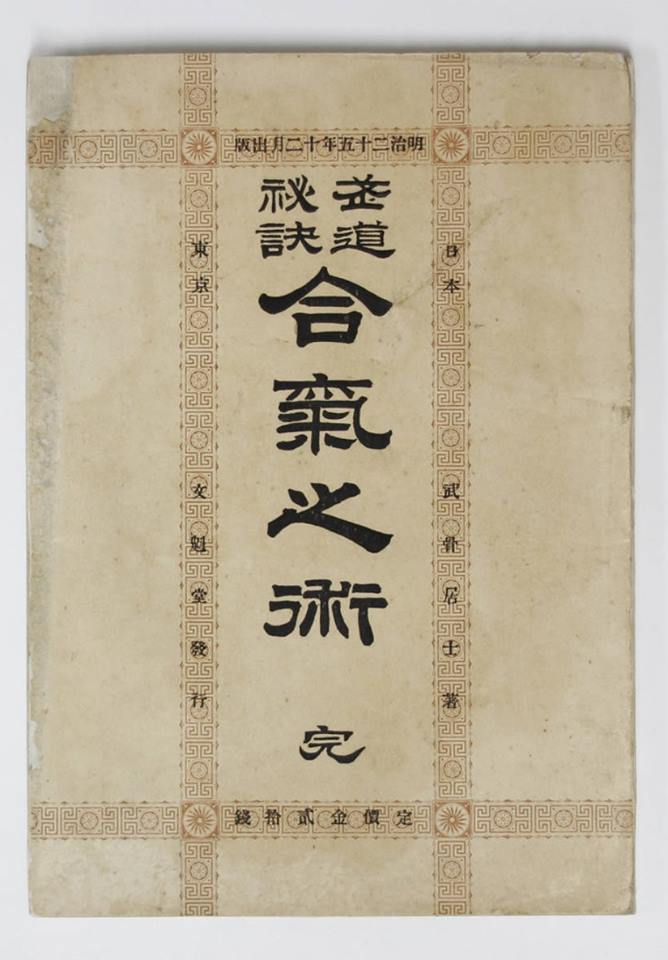
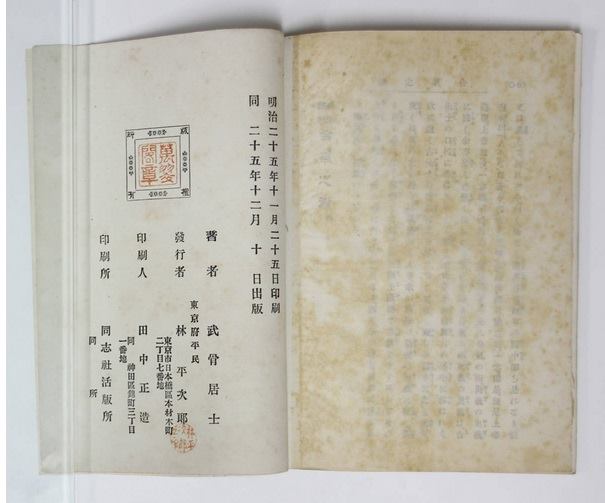
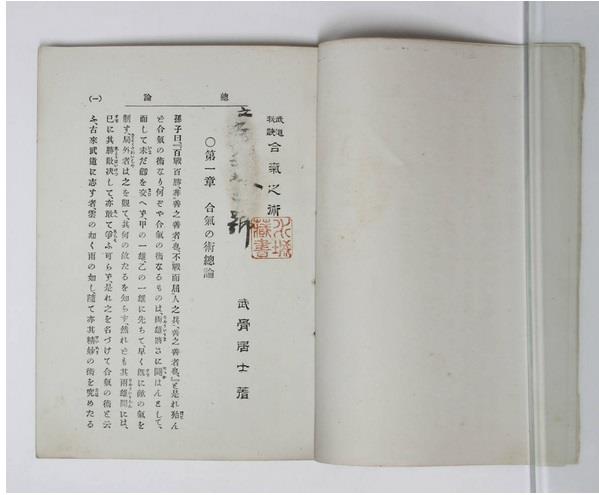
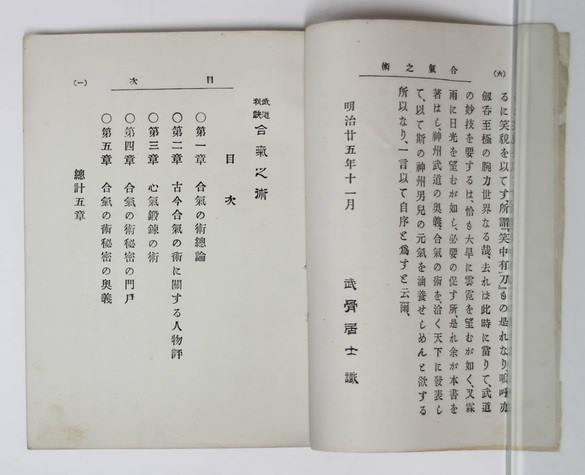
Those photos are provided by Mr. Christian Flament, a student of Makoto KOJIMA sensei of Kishin Juku 氣慎塾 小嶋誠先生
You can check the contents of this book in the website of National Diet Library of Japan http://dl.ndl.go.jp/info:ndljp/pid/859828
How one can learn and master Aiki
 Thanks to its recent popularity, one has not such big difficulty to find Aiki masters in Japan as it was 30 years ago. The numbers who mastered Aiki has increased drastically in Japan during these 20 years. But it is still not easy to master it because the most of Aiki masters are not so willing to teach Aiki to their students. Such tendency seems has started from the famous Aiki masters in the history, such as Morihei UESHIBA sensei and Gozo SHIOTA sensei. Those famous Aiki masters had spent huge effort to master Aiki by themselves so they did not want to teach it so easily even to their own sons.
Thanks to its recent popularity, one has not such big difficulty to find Aiki masters in Japan as it was 30 years ago. The numbers who mastered Aiki has increased drastically in Japan during these 20 years. But it is still not easy to master it because the most of Aiki masters are not so willing to teach Aiki to their students. Such tendency seems has started from the famous Aiki masters in the history, such as Morihei UESHIBA sensei and Gozo SHIOTA sensei. Those famous Aiki masters had spent huge effort to master Aiki by themselves so they did not want to teach it so easily even to their own sons.
And many of existing Aiki masters who could master Aiki under those famous historical Aiki masters are also not willing to teach Aiki to their students to keep it as a hidden special technique with high value. It could also be the case that many of those Aiki masters have mastered the technique without knowing its methods how and why it works and accordingly they do not know exact way how to teach it to their students. Actually in the most of Aiki schools (Dojo) people are taught by teachers as “Just watch me carefully and think over by yourself”. If people were taught in such classic teaching way, only a few selected students could master Aiki after at least ten years training. Almost all the other students could not master Aiki even after 10 years training and they were told by their teachers that it was because their lack of seriousness. Finally they noticed they consumed a lot of time and learning fee in vain.
From my Aiki teaching experience for over 15 years, I have noticed one important fact that people can understand and can master Aiki rather easily and fast if they are taught by clear and plain explanation based on the methods how Aiki works. And now I can find several Aiki masters in Japan who are teaching exactly in this same way. By such instruction one can start using Aiki even after several times lesson. I feel very happy that every year I find more numbers of those Aiki masters who teach Aiki to their students in a logical way. You can find those enthusiastic Aiki teachers on Youtube.
Here at the end I would like to give you one advice how you can choose a good Aiki school (Dojo). Please just visit that Dojo and carefully watch how many students at the Dojo can do Aiki Jutsu. If the teacher tries his best to teach Aiki Jutsu to his students, almost all the students should be able to manage Aiki Jutsu. Of course it depends on how long they learn that how well they can manage Aiki Jutsu, no need to say it. On the contrary there are Dojos where only few students can manage Aiki Jutsu where the teachers instruct students in an old traditional way without proper and polite explanation. Unfortunately that is the case for many of historically famous Aiki Dojos established by the big Aiki masters in Japan.
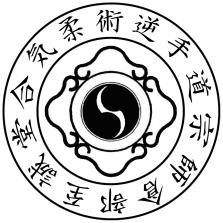 Makoto KURABE – SHISEIDO
Makoto KURABE – SHISEIDO
representative of
AIKI JUJUTSU GYAKUTE-DO
website: www.gyakutedo.org/wp
Facebook: Aiki Jujutsu Gyakute-do
Text by Kurabe Makoto Shiseido
Born in 1950. When he was in his 30s, he began learning Gyakute-do Jujutsu, which was derived from Hakkoryu Jujutsu in the 1970s. Just before reaching the age of 40, he moved from Japan to The Netherlands and continued to master and develop Gyakute-do. In October of 2013, after adding the system of Aiki-Jutsu that he developed himself, he transformed Gyakute-do into Aiki-Jujutsu Gyakute-do, and became 2nd Soushi, grand master, of Gyakute-do. After retirement, he left The Netherlands and began promoting Aiki-Jujutsu Gyakute-do both in Japan and in Poland as his main pursuit. He is also teaching his Gyakute-do to Budo fan in the world via corresponding course.
武道エッセイ第11回 合気とは?
(※日本語版で翻訳版ではないので英語版との多少の違いが有る事をご了承ください)
初めに
嘗て私がオランダのロッテルダムにある日本文化センタで逆手道を教えていたときのことです。一人のオランダ人が入門して来ました。彼は合気柔術5段で、オランダ南部で30人ほどの弟子に柔術を教えていると自己紹介しました。彼を教え始めて驚いた事には、彼は合気の技は一切知らず、また教えてもなかなか理解せず、ひたすら私が指導する様子をビデオで撮影するばかり。そうして4,5か月過ぎて一応一通りの技を全て収録したと判断したのか逆手道の練習参加を辞めてしまいました。それから1年ほどして、偶然にユーチューブで彼の演武を観る機会が有りましたが、何と彼はビデオで写した逆手道の技のうち見栄えのする幾つかを彼の流派の合気柔術の技として紹介しているのです。因みにそれらはどれも柔術技で合気柔術の技ではありませんでした。
こんなことは一回だけではなく、27年間の間に何度も経験しました。私は自分に指導を求めてくる人には誰でも自分の知る限りの技やノウハウを惜しみなく全て一生懸命に教えます。しかし教えを求めてくる人の中には先の男の様に不埒な輩も時々混ざっています。それでも私は自分の方針を変えずに、だれにでも真摯に教える姿勢をずっと続けてきました。そのおかげで沢山の素晴らしいお弟子さんたちに恵まれることになったのです。
世界中で有名となった合気
先の男もそうですが、合気という名前は世界中の武道ファンの間で知られるようになり、だれもが習いたいと憧れるものとなりました。しかし海外ではほとんどの人が合気がどのようなものであるかを知りません。一つの例としてドイツには合気柔術協会という団体が有って、ドイツ人の合気柔術10段を自称する人が責任者を務めています。その人は欧州各地に乱立するジュウジツあるいはアイキ・ジュウジュツ道場の指導者に手紙を送り、彼の協会に所属するよう勧誘します。欧州各地で乱立するジュウジツ道場には上部団体に属さずに勝手に段位と流派を名乗って生徒に怪しげな技を指導しているところが多く、そのような人たちに自分の運営するアイキ・ジュウジュツ協会に生徒も含めて所属させ、その見返りとして5段以上の高段位を認定するというわけです。各地で段位を自称するジュウジツ指導者たちは上部団体に所属することで自称する段位を“公認”してもらえ、協会は所属する団体が増えれば収入と自分の権威が増す、つまり持ちつ持たれつの関係を作っているわけです。そこが発行している認定証を見て思わず吹き出してしまいました。“免許皆伝”というスタンプが押してあるのですが、漢字が間違っていて“免許階段“となっているのです。その責任者で合気柔術10段を自認する男は、間違いなく合気の技など一つも知らないに決まっています。また同じような自称合気柔術宗家は欧州に掃いて捨てるほどいます。彼らにとって合気という名前は単に格好が良くて聞き映えがする名前でしかなくただのデコレーションに過ぎません。
昨年に友人のポーランド人空手家から、日本武術の研究をしているポーランド人の准教授を知っているから興味が有れば紹介すると誘われました。実際に紹介されて会う前にその人が書いた英語の日本武術(合気柔術)に関する論文を読んでみました。会う価値があるかどうか事前に確認するためです。驚いたことに彼が書いた「合気柔術とは」と題された学術論文に書かれている内容というのは特定の柔術流派がホームページに載せている程度の記述ばかり。その流派以外ではもうすでに信じられていないことまで論文として堂々と掲載しているのです。合気柔術、合気術も全く同じと断じていてプロの研究者ですらその程度の浅い認識しか持ち合わせていないことをとても残念に思いました。
それでは一体合気とはどのようなものでしょうか。
合気の定義は日本でもいまだに完全には確立されておらず、人によってさまざまな定義付けがされています。それを踏まえた上で私なりの定義を以下にしてみます。分かり易くなるようにここでは柔術、合気柔術そして合気術の3つを対比しています。
柔術:
人の体で手首、肘、指関節などの構造上弱い部分に着目してそこを効果的に責めて相手を投げたり制する技
合気柔術:
特定の動きや刺激に対して敏感となる人の知覚作用を利用して、その動きを与えて相手を崩したり投げたりする技。つまり柔術が主として人体の静的な弱さを責めるものであるのに対して合気柔術では人体の動的な弱さを責めるもの
合気術:
意識でコントロールすることで通常ではない筋肉の動かし方を実現し、非日常的な動作をすることで相手を攪乱して抵抗できない状態へと陥れて無抵抗状態として投げたり制したりする技
一つの技を例にとってビデオで説明します。
柔術技:
相手の右腕をこちらの両手で抑え、右手で逆手を聞かせながら左手で肘関節の裏を強く推して相手を屈服させる
合気柔術技:
相手の腕をつかむのは同じだが、右手はただ相手の右手首を掴んでいる状態で、左手で作った手刀で相手の右肘関節を裏側からぐるっとなぞると、受けは抵抗する力を失って下へ崩れる。要する力は柔術の1/2以下です。
合気術:
合気柔術と同じ掴み方で、左手から相手の右肘関節を介して丹田へと向かう力を加える。相手は自分の肘関節ではなく丹田に直接加わる力を感じで腰から砕けるように落ちる。ここで要する力は柔術の1/10以下の僅かなものです。
合気術の歴史
合気術は知られている限り戦国時代末期の柳生新陰流の剣の型の一部にその術理が示されています。当時柳生の剣の型を編み出した創始者はすでに合気の術理を会得していたことが分かります。さらには泰平の世が約250年間続いた江戸時代の後期には幾人かの武術者(主に剣術)が合気の術理を解明しようとその研究成果を世に表しています。そして当時から合気という言葉が使われていました。ただしこの合気が纏まった武術形態として世の中に出るのは明治も後半となって武田惣角先生が現れるのを待たねばなりません。武田惣角先生は自身で学んだ剣術の術理に合気の術理を発見し、それを系統的に技に纏めていって1898年に大東流柔術を興してその普及を開始しました。こうして武田惣角先生はそれまでは剣術や柔術の流派に細々と伝承されていた合気の術理を一つのシステムとして纏め上げ、それを日本の武術界に広く紹介するという大きな貢献を果たしたのです。
ただ一つ残念なことは武田惣角先生の興した大東流を継承する人たちの間で一部の人たちが、合気の術理は武田惣角先生が初めて明らかにした大東流独自の術理であると曲解し、大東流以外の人が合気の名前を使ったり、合気の名前で技の指導をするのは言語同断とすら断じていることです。一つの反証をここに挙げておきます。この本は明治二十五年、1892年に「合気之術」という題で一人の武術者によって出版された本です。武田惣角先生が大東流を興して世の中に合気術を広め始めるすでに6年前に世の中に出されています。内容は現在の私たちがイメージする合気とは少々異なって、格闘や合戦の場での心の持ち方などかなり広範な合気に関する解説がなされております。ともあれこのことだけでも合気術が武田惣角先生の独創的な発見あるいは考案ではないことが明白となります。
この本の存在を教えてくれたのはフランス人の熱心な日本武道研究者であるクリスチャン・フラメンさんです。フラメンさんの本業はパリで最も危険と言われる地区を担当する警察官、氣慎塾の小嶋先生から合気柔術をずっと習っています。前述のような一流派の宣伝をコピーして“学術論文”にする日本武術研究者もいれば、彼のように真剣に日本武術を研究する人もいます。その武術に対する真摯な姿勢から私は嘗ての私の逆手道の弟子だったベルギー人のSteven Vaes氏を思い出します。月刊秘伝誌でも嘗て彼の武術活動を紹介しましたが、5年前に自動車事故で突然亡くなってしまいました。彼の家を訪ねた際に彼の部屋が丸々武術関連の本で埋まっているのを見て驚いたのを今でも思い出します。彼の武術に関する知識の深さと広さは私などではとてもかなうものでは有りませんでした。




写真の提供はフランス人のChristian Flament さん。日本古流合気柔術 氣慎塾 小嶋誠先生のお弟子さんです。
国立国会図書館のデジタルサイトでこの本の中身が見られます。 http://dl.ndl.go.jp/info:ndljp/pid/859828
ではその合気術を学ぶには
近年合気術の知名度が上がったために、合気術を学ぶのは30年前と比べるとさほど難しくは無くなってきています。この20年の間で合気術を習得した人の数は飛躍的に増えました。それにもかかわらず合気術の習得は依然として容易であるとは言えません。
その大きな理由の一つに、合気術を習得した人がその弟子たちには積極的に合気術を教えようとはしないという古典的な傾向/問題が有ります。例えば武田惣角先生から合気術をじかに学んだ合気道の創始者である植芝盛平先生、その弟子の塩田剛三先生は自身で大変な努力を積み重ねて漸く会得した合気術を自分の家族にすら容易に教えようとはしませんでした。沢山いる弟子の中で極めて真剣に努力を重ねるごく僅かの弟子だけが先生の動きを見つめながら自ら工夫と失敗を重ねながらやっと会得していったのです。合気術は他の技と違って動きを見てそのまねをするだけではできるようになりません。ですから単に動きだけを追いかけ続けた他の大半の弟子たちは合気術を生涯会得することはできませんでした。それだけ貴重な技法だから人並外れた能力が有りかつ努力を重ねるやる気の有る者だけが会得すれば良い、そんな共通する思いを昔の合気の達人たちは抱いていたのかもしれません。
積極的に教えようとする先生が少ないという問題のほかにもう一つの問題が有ります。それは合気術を会得した人でもその原理が完全に分からないまま“何となくできるようになってしまった”という人が多いことです。当然こうした人たちはどうすれば合気術が出来るようになるかを自分の弟子たちに明快に説明することが出来ません。弟子もいくら習っても先生のように合気術ができるようになりません。どうやればできるようになるかを教えられずに、ひたすら指導者の動きを見せられ、あるいは相手をさせられるだけの稽古なら10年経ってもほとんどの人は合気術を習得できません。
私は自分が出来るようになった合気術を15年くらい前から他人に教え始めました。そして合気術はそれを実現する原理を明らかにしてその原理に基づいて説明すれば人は遥かに容易に合気術を会得することができることに気が付きました。原理も一つだけではなく、幾つも有っていまだに新しい原理を発見する喜びを感じています。嬉しいことに同じような方法でお弟子さんたちに分かり易く真摯に合気術を教えている先生がたと知り合えて交流する機会を得ました。氣空術空手の畑村先生、剛柔流空手の松村先生、お二人の師匠にあたる冠光寺眞法の保江先生です。この3人の先生がた以外でもユーチューブを見れば合気術を分かり易く丁寧にそして一生懸命に解説されている先生方を何人も発見できます。合気術を習得したいと願う人にとって本当に良い時代となってきました。
最後に一つ、良い道場の見分け方をご伝授します。良い道場とはお弟子さんたちを選り好みせずに全員が合気術を習得できるように指導してくれる道場ですから、実際にその道場を訪れて練習しているお弟子さんたちがどれくらい合気術ができるかを観察すればよいのです。もちろん練習期間の長さによって出来具合には差が出ますが、良い道場ではどこでも決まってお弟子さんたち全員が合気術をできます。私が実際に練習に参加させていただいた保江先生そして畑村先生の道場がまさにその通りでした。反対に悪い道場では合気術ができるお弟子さんを探すのに苦労します。嘗て訪れたオランダに在る合気道道場ではオランダ人の道場主は珍しく合気術をこなしていましたが、百人以上はいる彼のお弟子さんたちの中で合気術が出来そうな人は一人も見つけることが出来ませんでした。人から話を聞く限りでは日本の伝統有る有名な合気道場の多くでも同じような状況だそうです。
合気柔術 逆手道
第二代宗師 倉部至誠堂
website: www.gyakutedo.org/wp
Facebook Aiki Jujutsu Gyakute-do
At the starting of AIKI Web Course
Cooperating with BAB Japan Co., Ltd., hereby I start AIKI Web Course in order to realize my long-standing desire to let as many as martial arts fans all over the world have the correct knowledge of AIKI and learn how to practice AIKI.
This course consists of
Part 1 as introductory articles, I explain a wide range of knowledge about what AIKI is, which contains 6 lessons.
Part 2 as main articles, for beginners/intermediate level, I explain how to practice AIKI to master. It contains 24 lessons.
The each lessons will be uploaded on BudoJapan website one by one every week.
I hope as many people as possible will be interested in AIKI and become able to practice it by following this course.
AIKI Web Course 25 Lessons
-
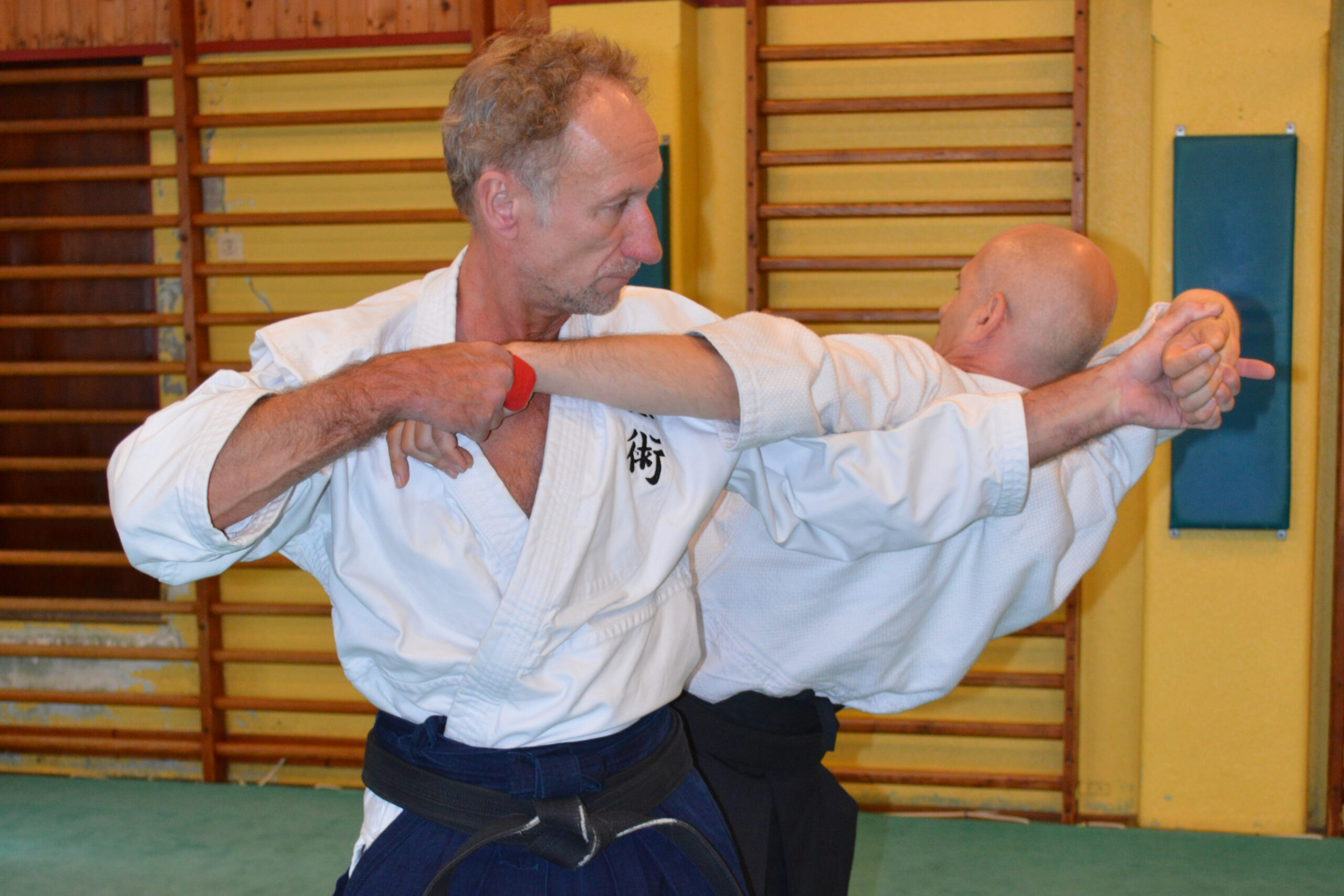
【AIKI JUJUTSU GYAKUTE-DO Series No.5】How you can learn Jujutsu properly
-
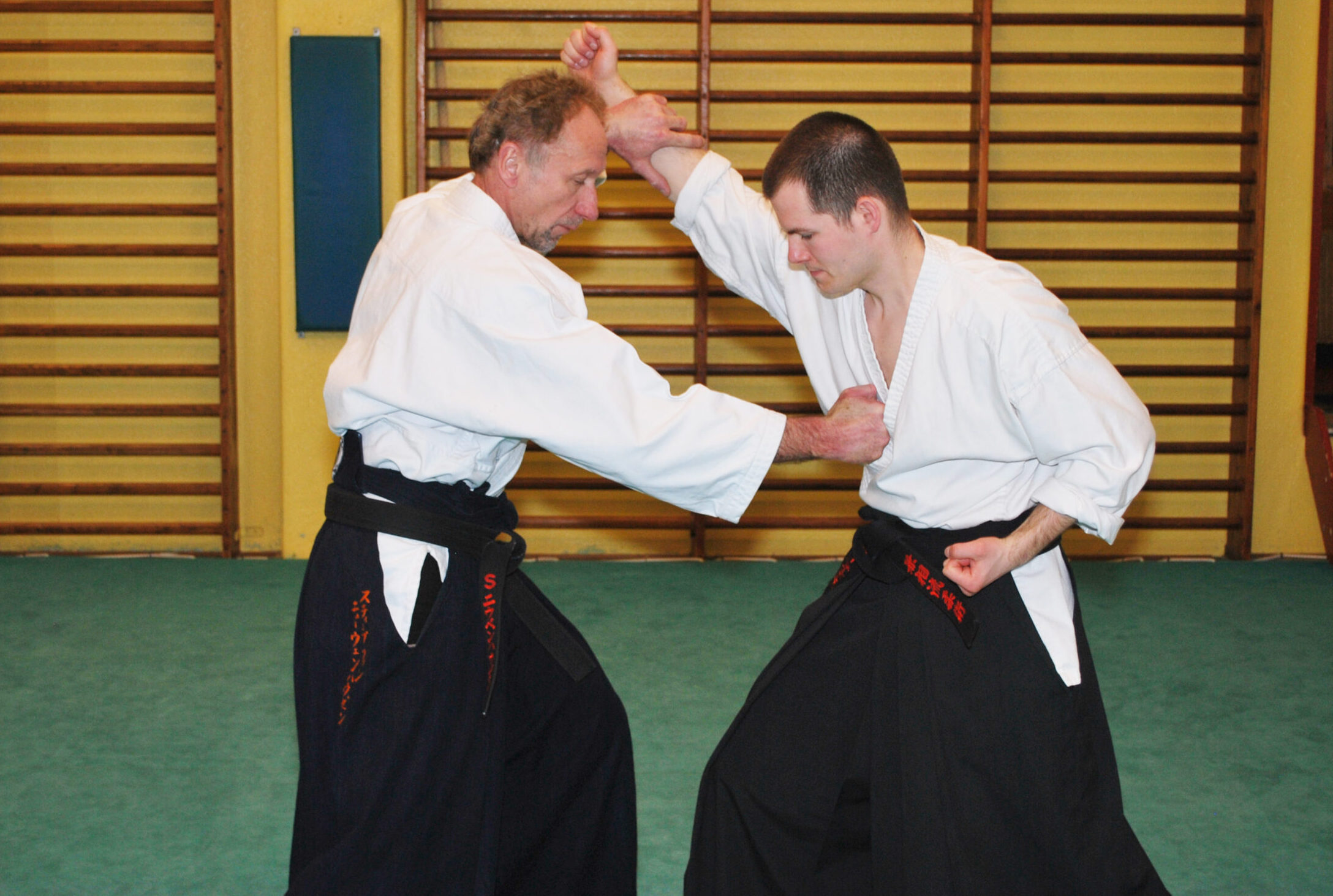
【AIKI JUJUTSU GYAKUTE-DO Series No.4】DAKEN-HO Hit and Kick KATA and AIKI
-
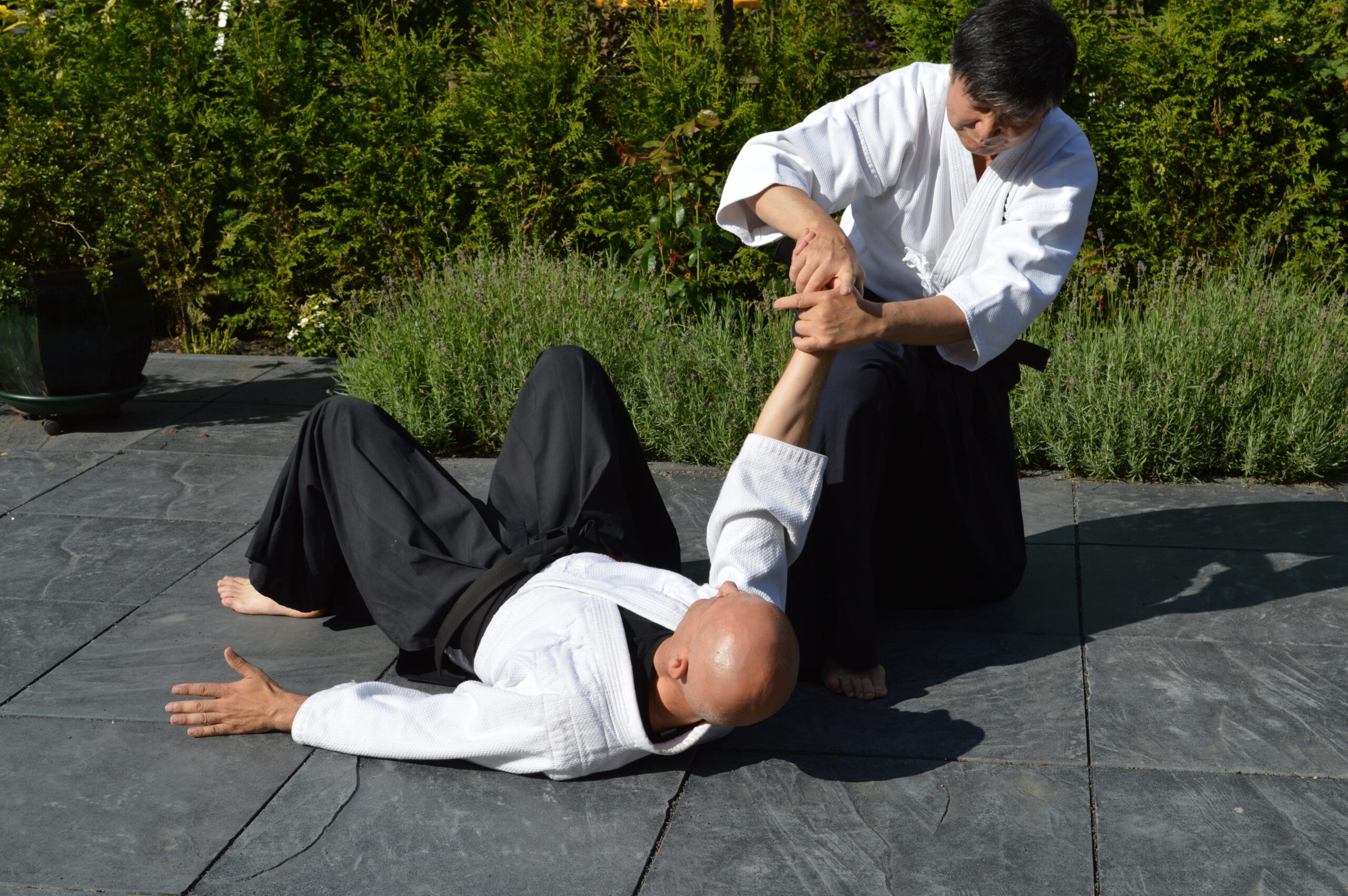
【AIKI JUJUTSU GYAKUTE-DO Series No.3】JUJUTSU WAZA, digest of FUDO
-
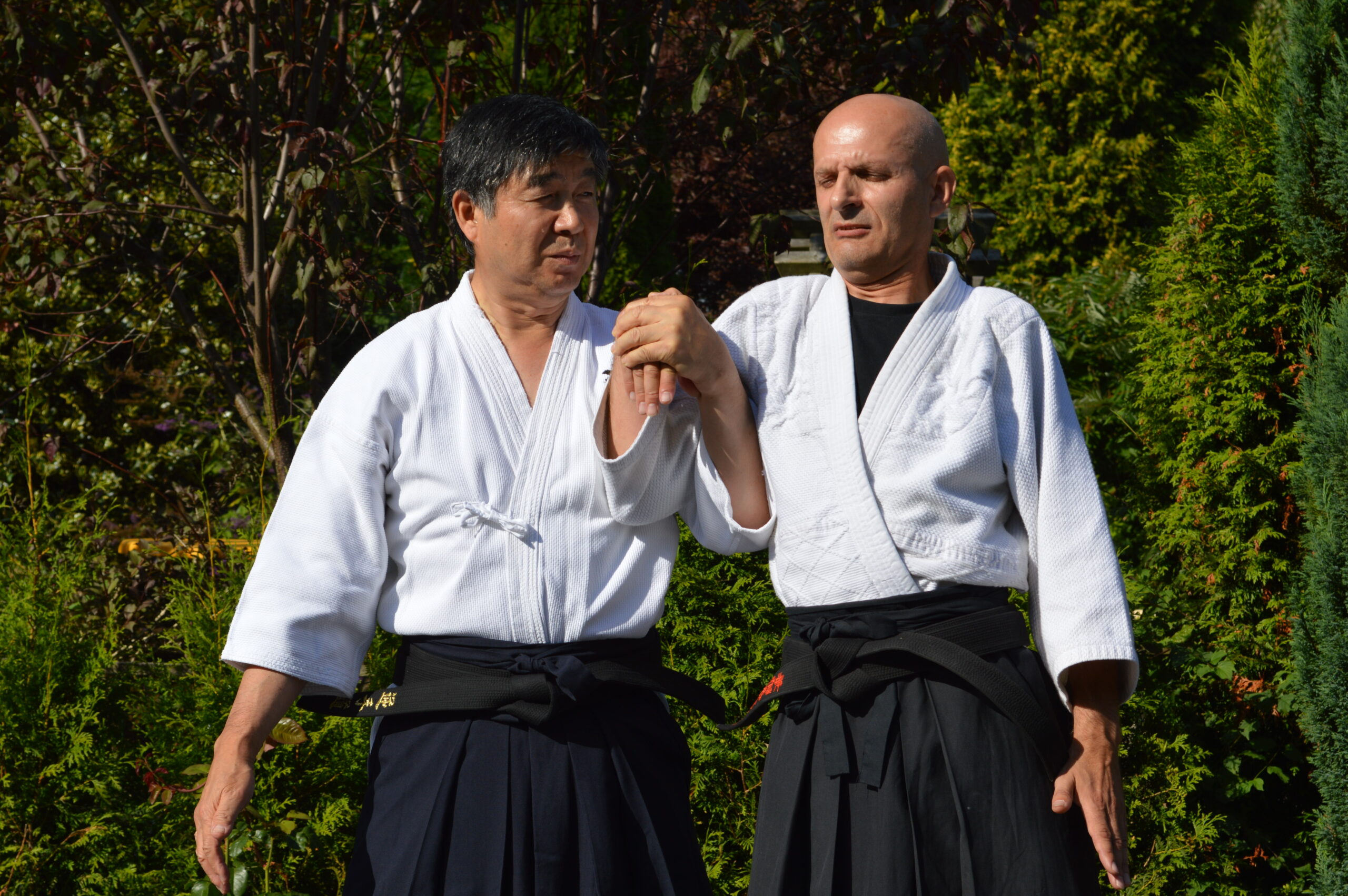
【AIKI JUJUTSU GYAKUTE-DO Series No.2】JUJUTSU WAZA, digest of NUKI, RENKO and NAGE
-
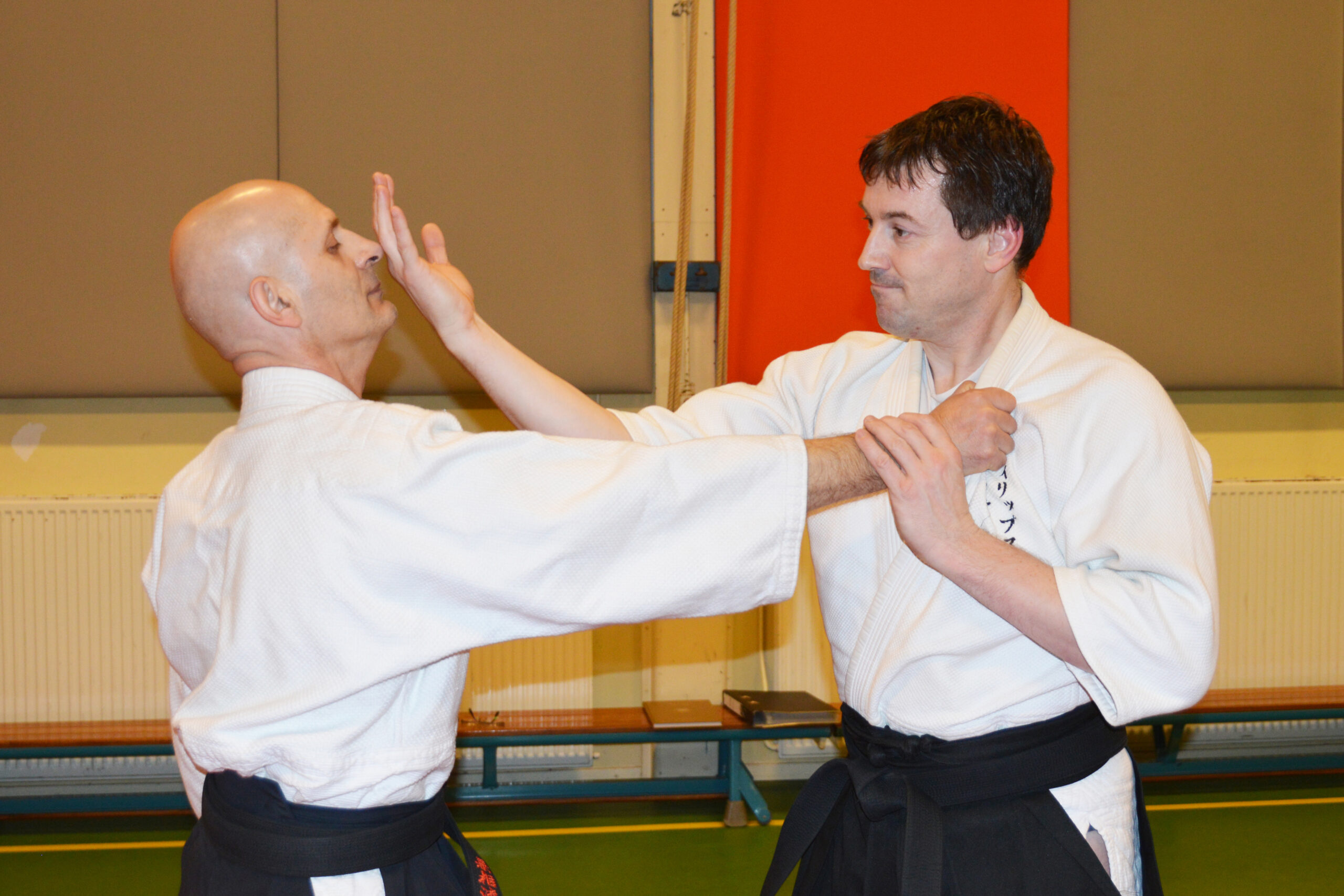
【AIKI JUJUTSU GYAKUTE-DO Series No.1】About GYAKUTE-DO and the digest of its basic techniques
-
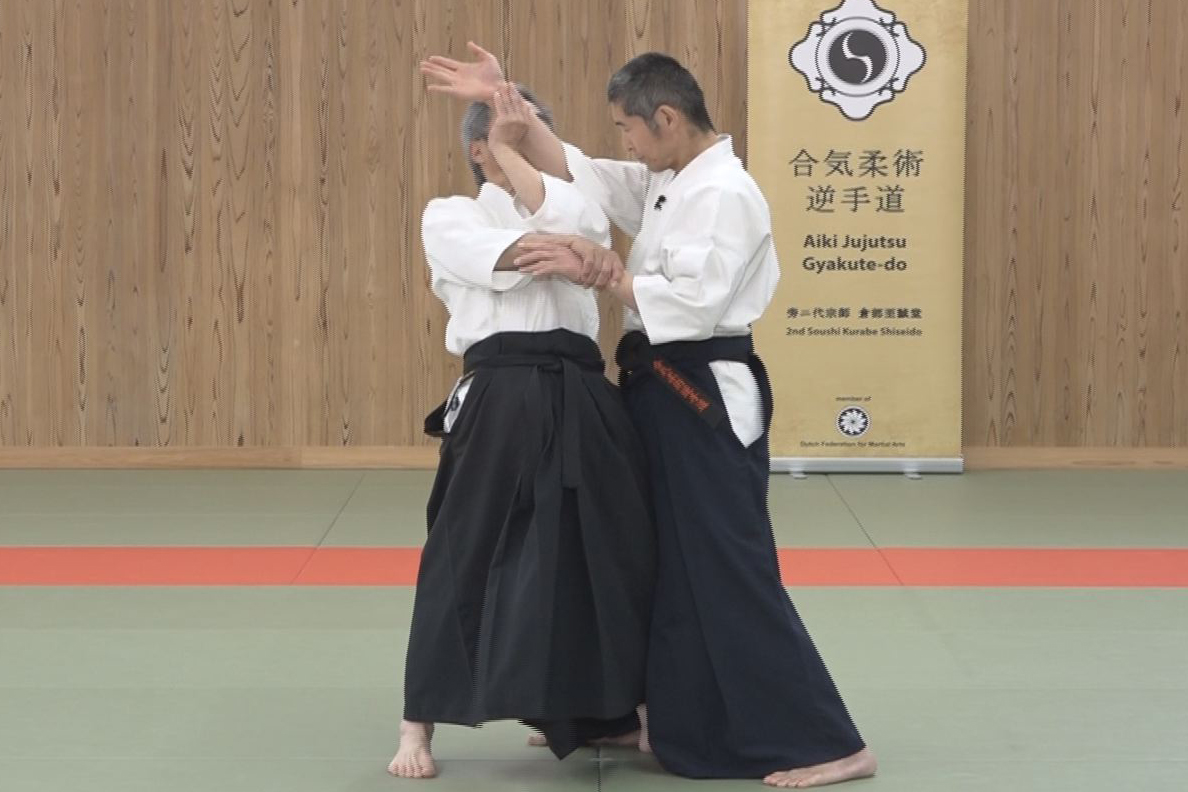
【AIKI Web Course Part 2】Lesson 24 With Comb. of Different Methods #2
-
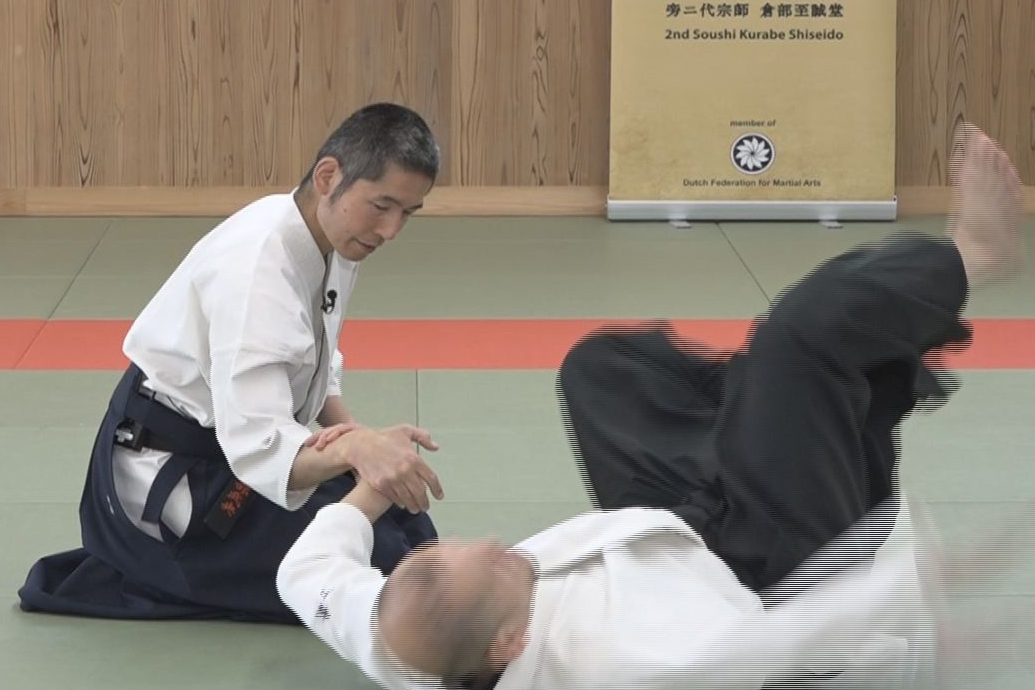
【AIKI Web Course Part 2】Lesson 23 With Comb. of Different Methods #1
-

【AIKI Web Course Part 2】Lesson 22 Advanced Tech. using F. E. method #2
-

【AIKI Web Course Part 2】Lesson 21 Advanced Tech. using F. E. method #1
-
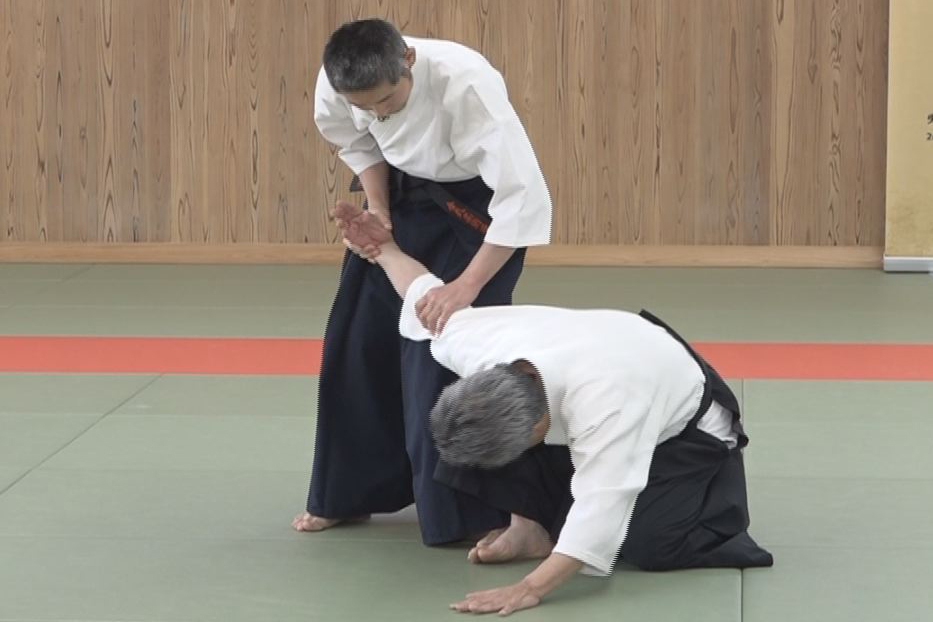
【AIKI Web Course Part 2】Lesson 20 Advanced tech. using T. F. T. #2
-
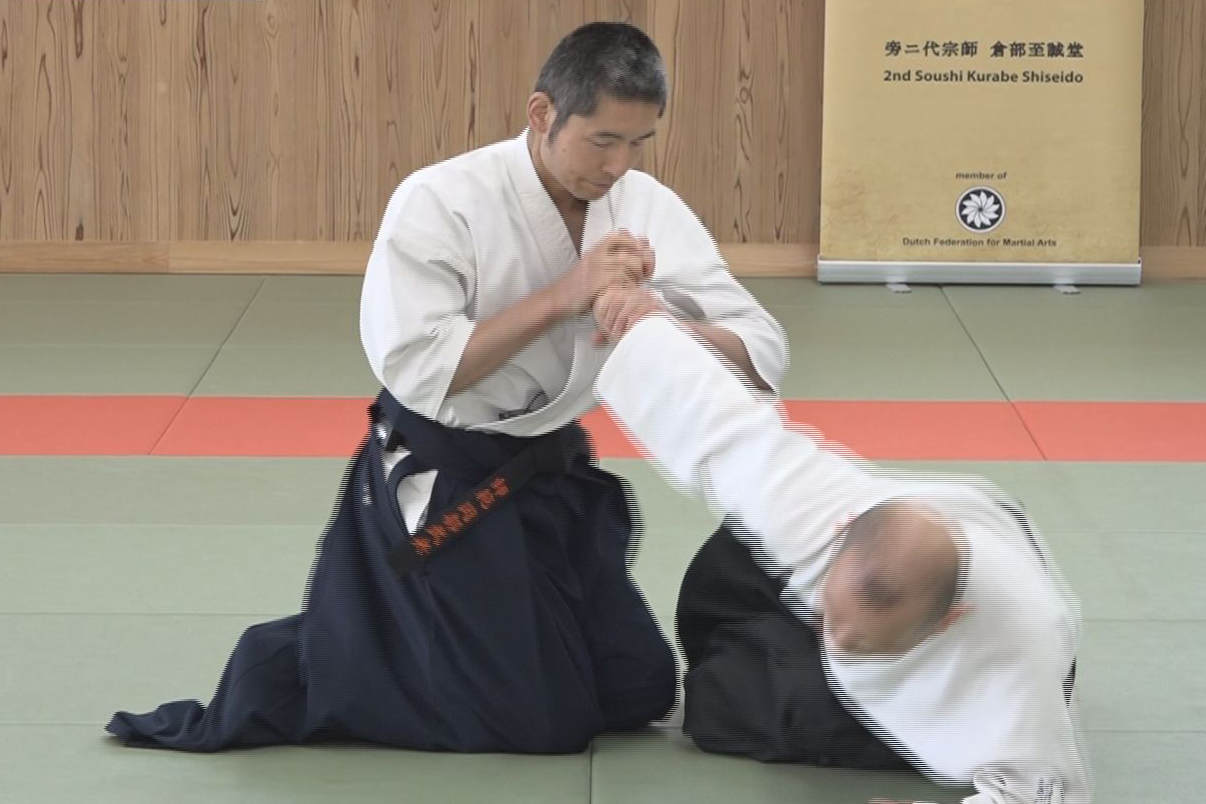
【AIKI Web Course Part 2】Lesson 19 Advanced tech. using T. F. T. #1
-
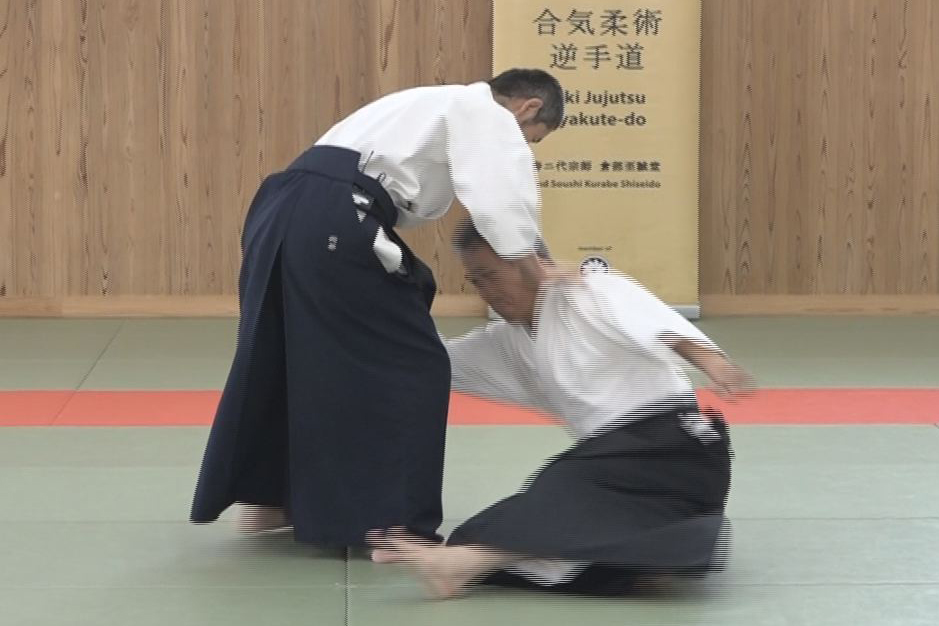
【AIKI Web Course Part 2】Lesson 18 Advanced tech. using AIKI Contact #2
-
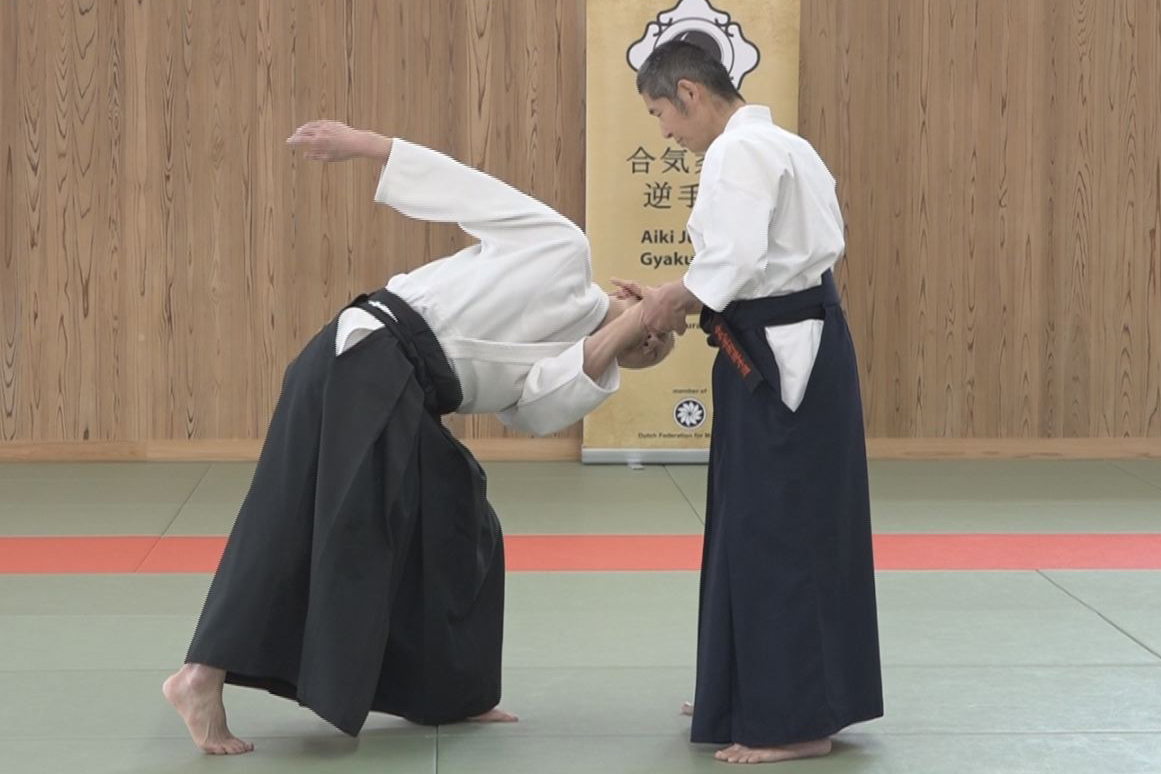
【AIKI Web Course Part 2】Lesson 17 Advanced tech. using AIKI Contact #1
-
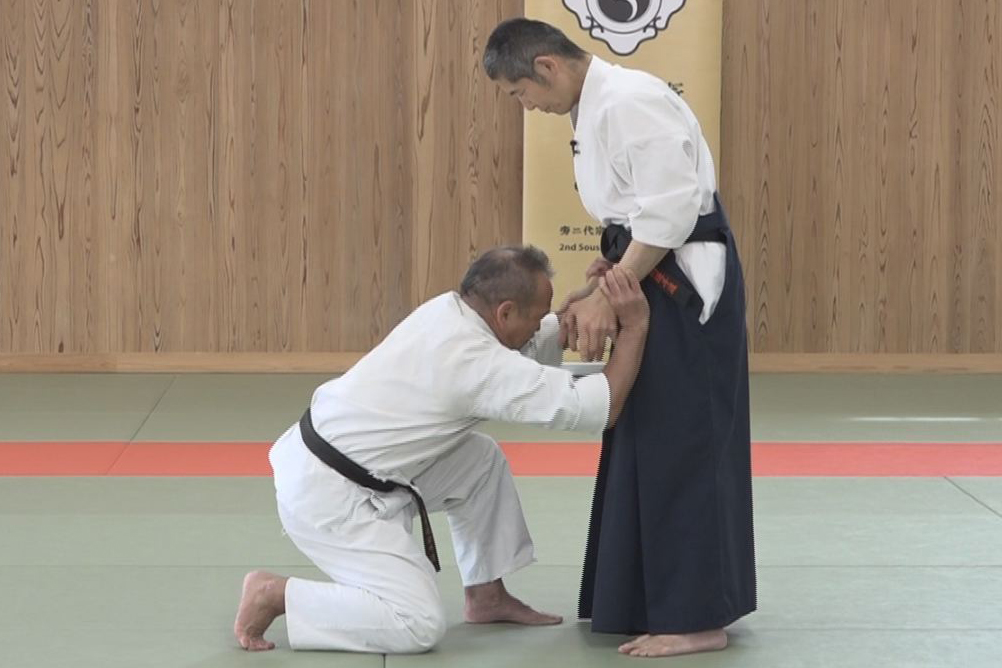
【AIKI Web Course Part 2】Lesson 16 Advanced tech. by Undetectable F.T. #2
-
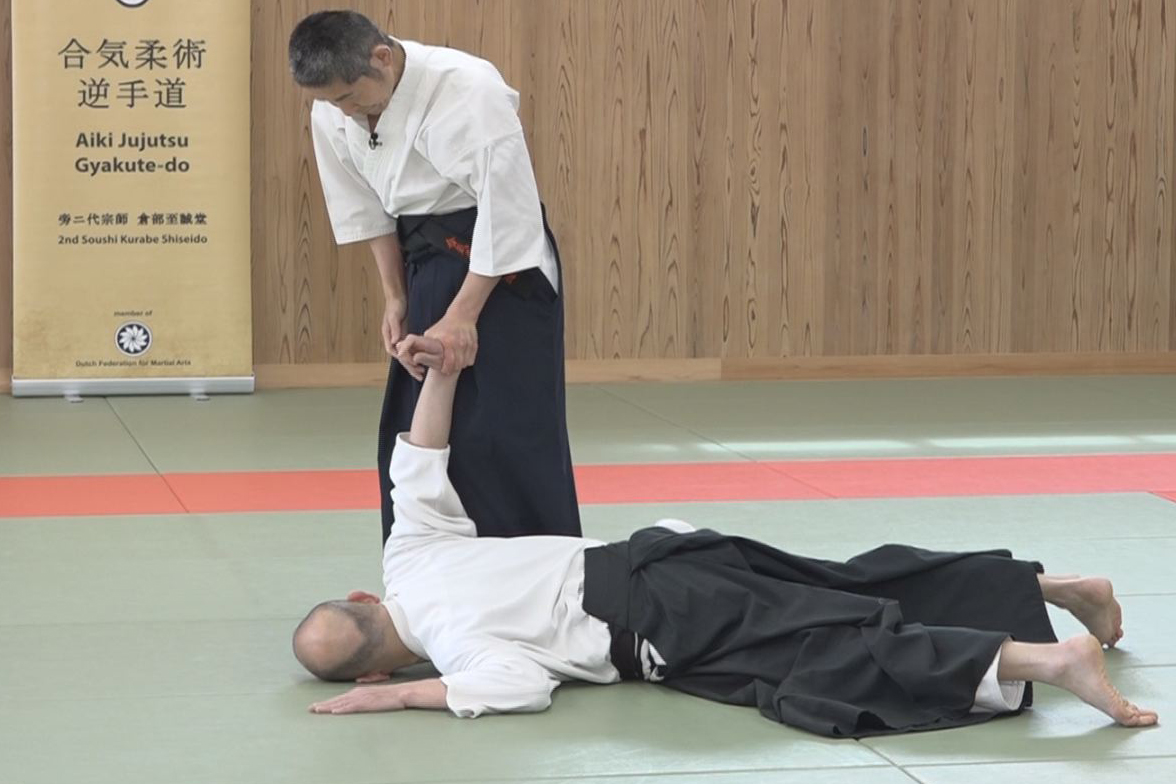
【AIKI Web Course Part 2】Lesson 15 – Advanced tech. by Undetectable F. T. #1
-
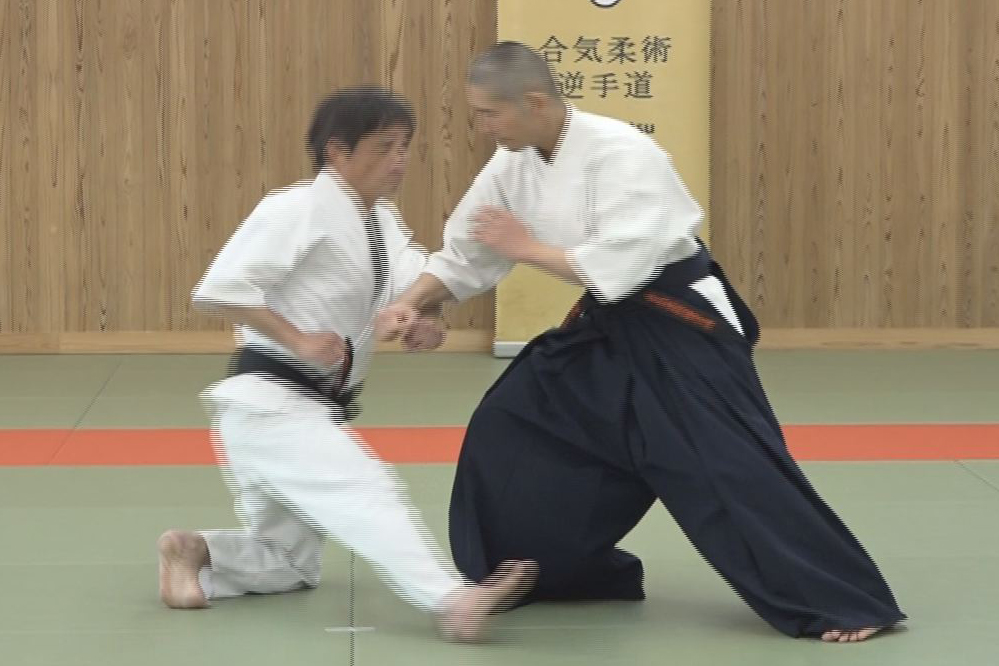
【AIKI Web Course Part 2】Lesson 14 – Advanced tech. by the Waving method #2
-
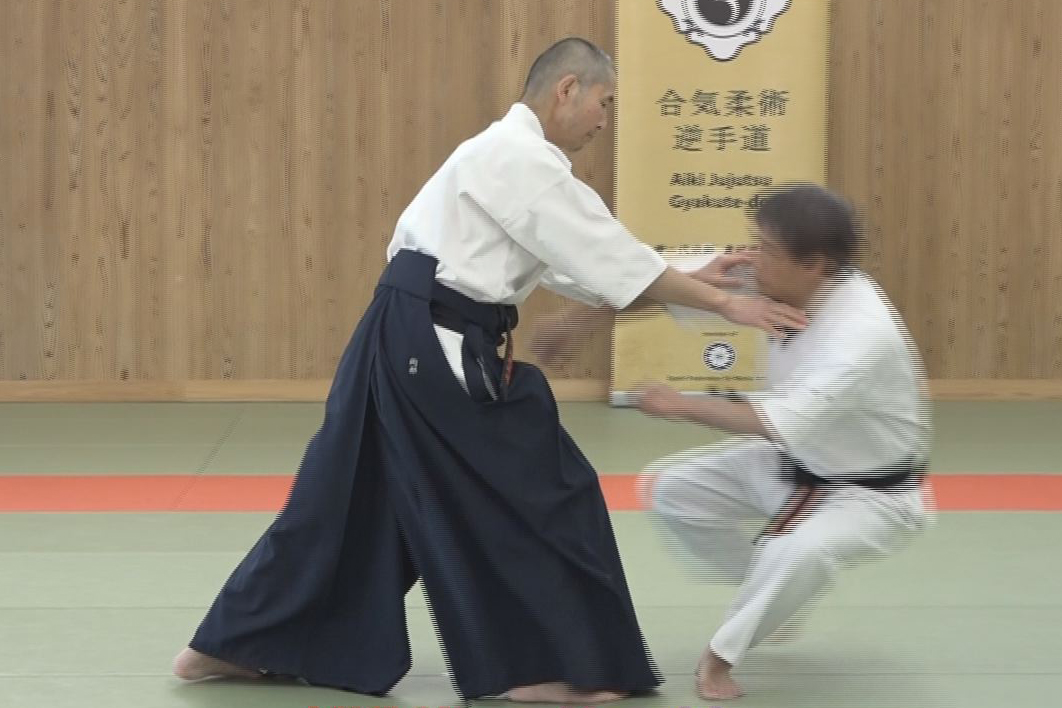
【AIKI Web Course Part 2】Lesson 13 – Advanced tech. by the Waving method #1
-
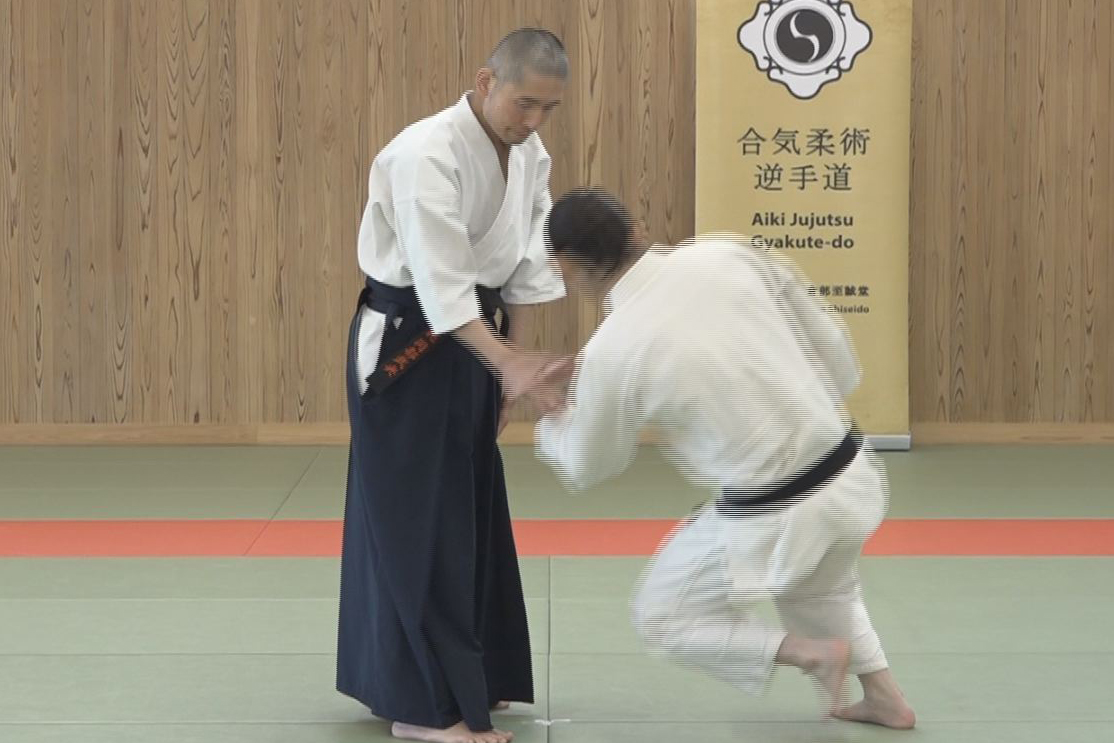
【AIKI Web Course Part 2】Lesson 12 – Gyaku-te by not Using Force nor AIKI
-
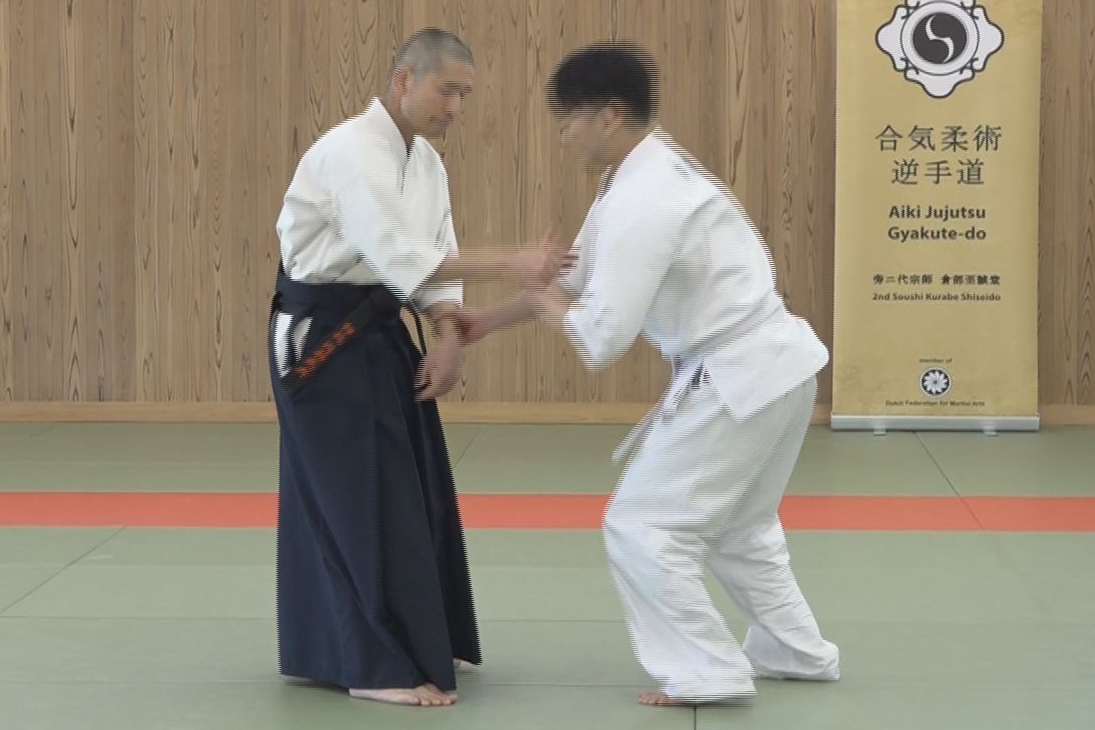
【AIKI Web Course Part 2】Lesson 11 – Gyaku-te Realized by the AIKI Method
-
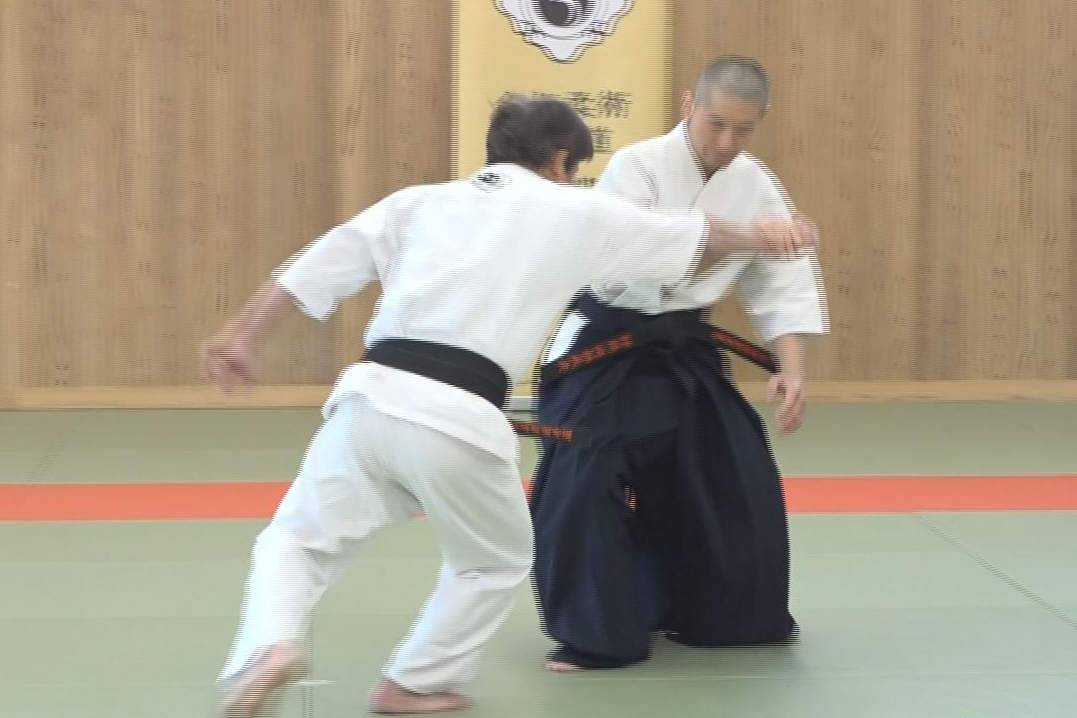
【AIKI Web Course Part 2】Lesson 10 – Application of Force Equilibrium method
-
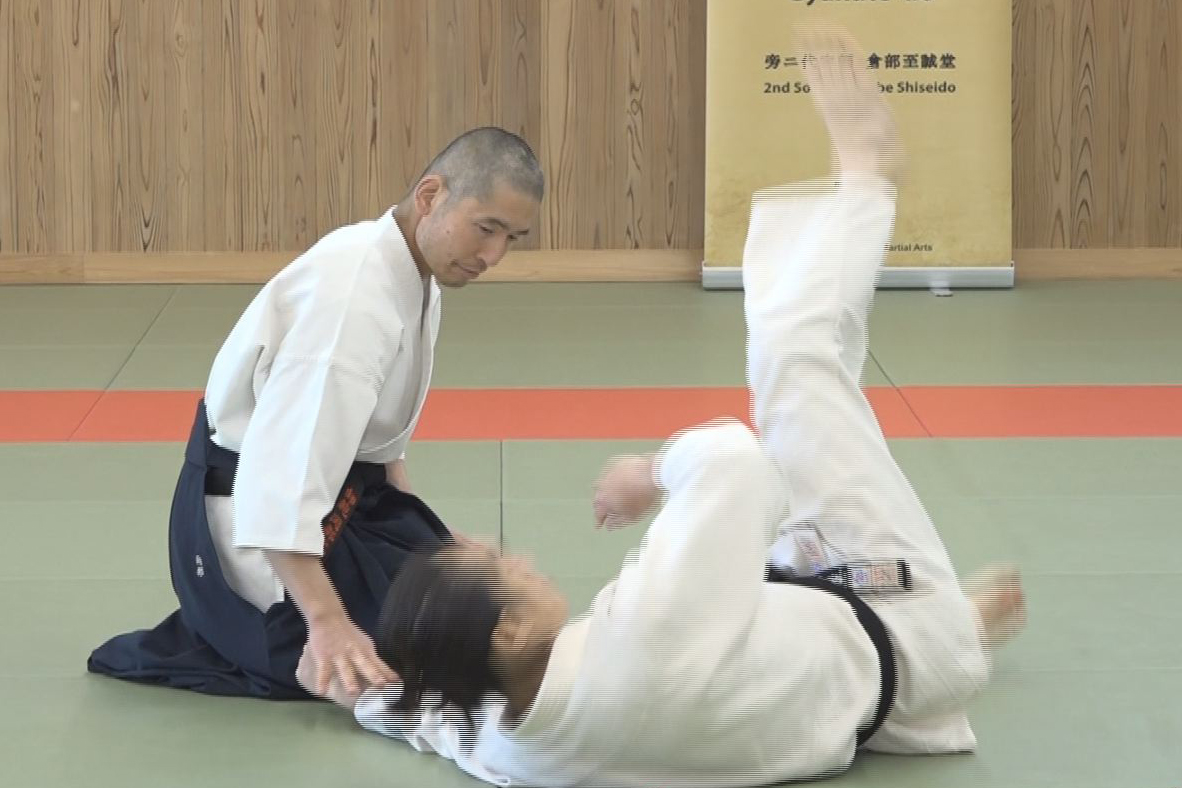
【AIKI Web Course Part 2】Lesson 9 – Force Equilibrium
-
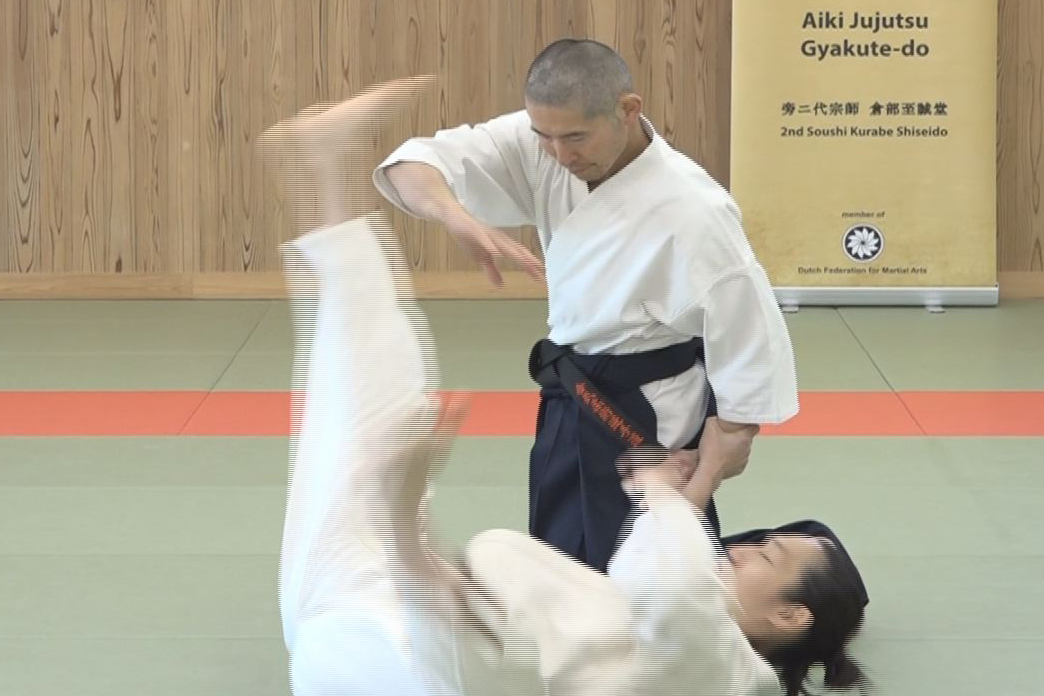
【AIKI Web Course Part 2】Lesson 8 – Application of Targeted Force Transfer
-
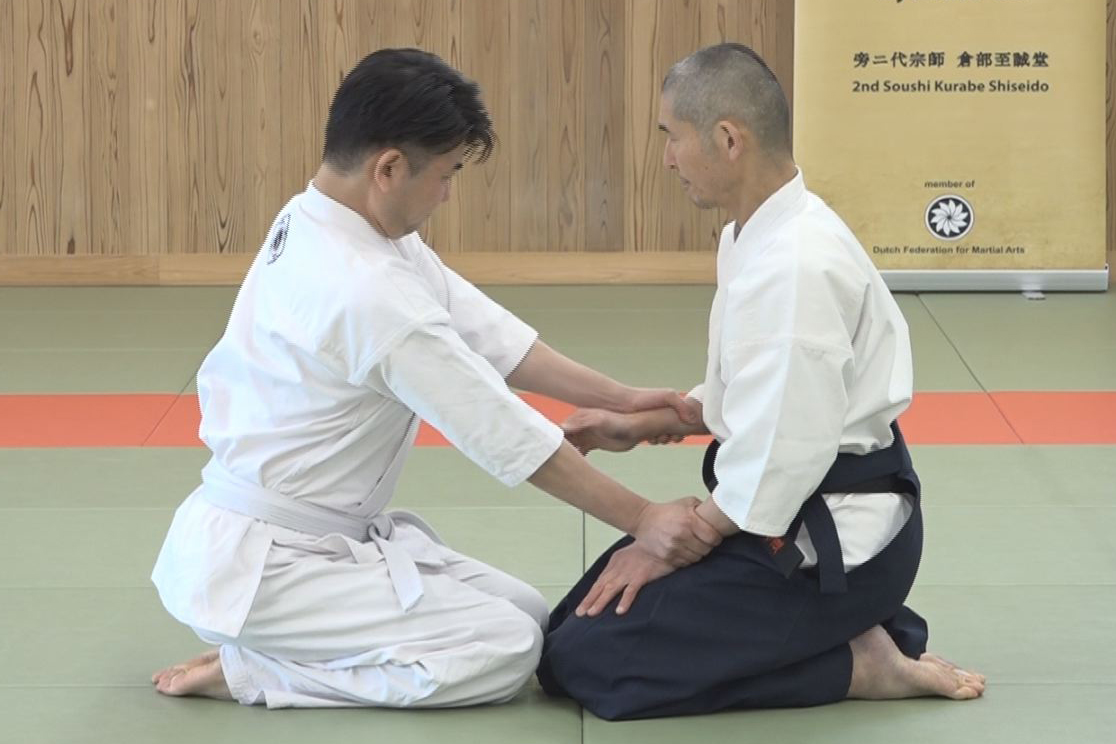
【AIKI Web Course Part 2】Lesson 7 – Targeted Force Transfer
-
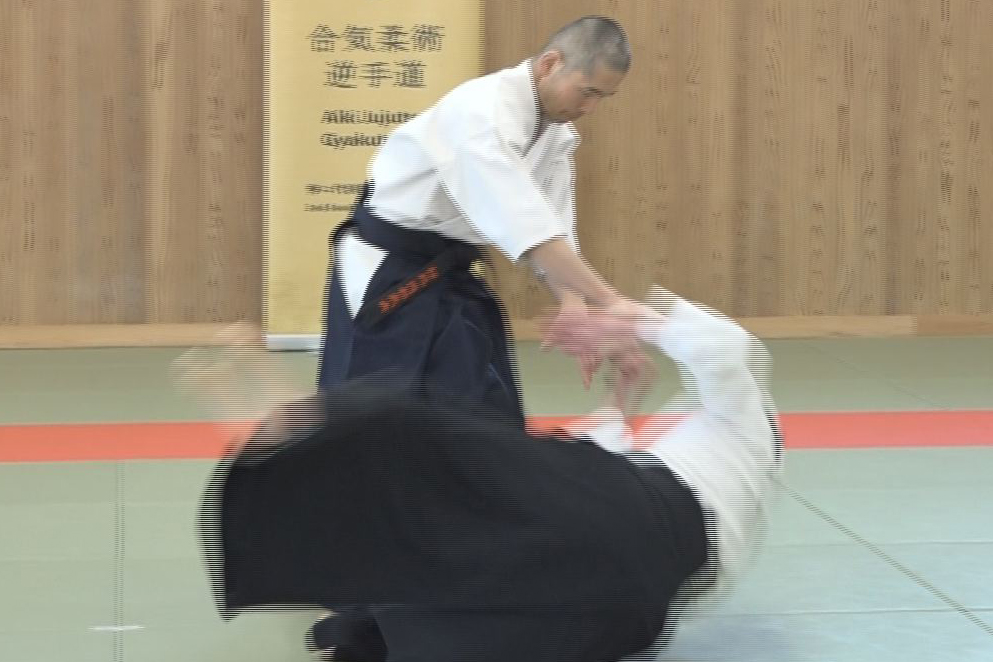
【AIKI Web Course Part 2】Lesson 6 – Application of AIKI Connection
-
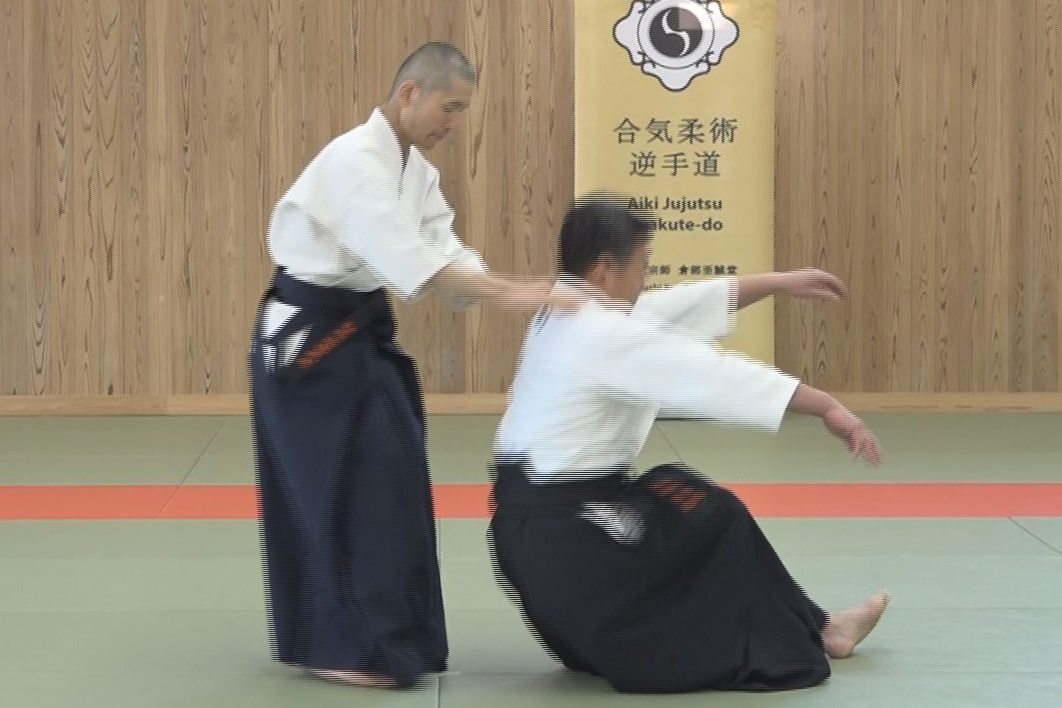
【AIKI Web Course Part 2】Lesson 5 – AIKI Connection
-
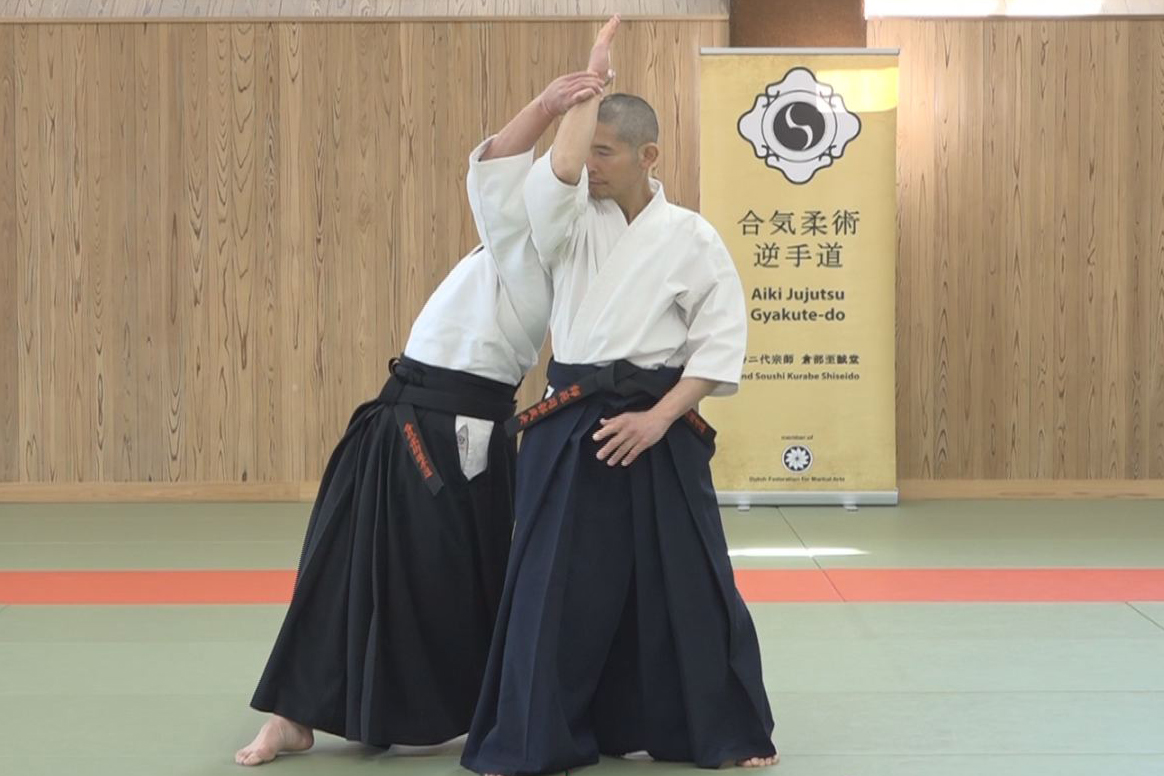
【AIKI Web Course Part 2】Lesson 4 – Application of Nondetectable Force Transfer
-
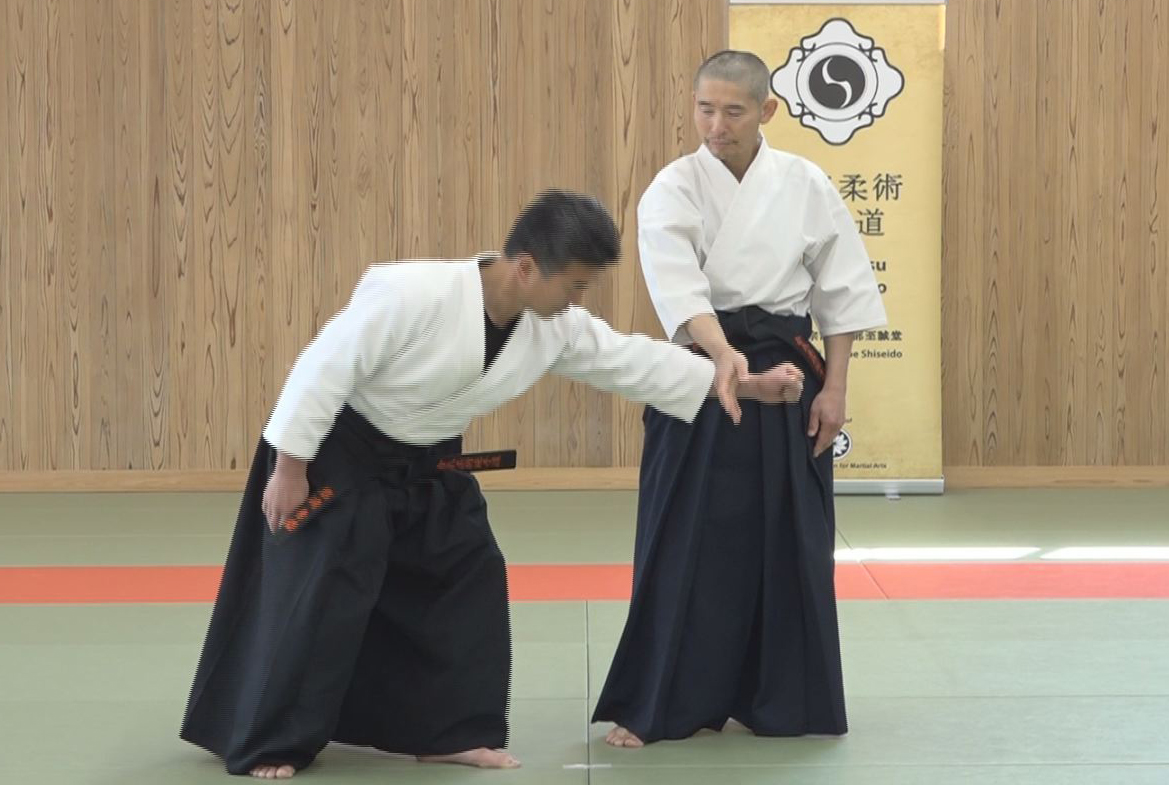
【AIKI Web Course Part 2】Lesson 3 – Explanation of Undetectable Force Transfer
-
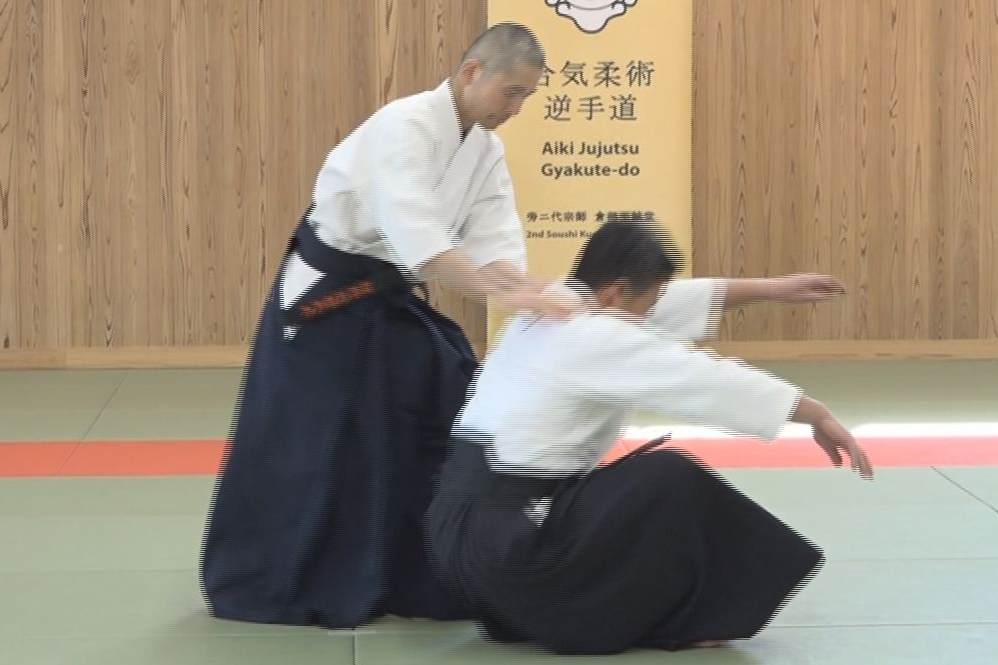
【AIKI Web Course Part 2】Lesson 2 – Application of Waving Method
-
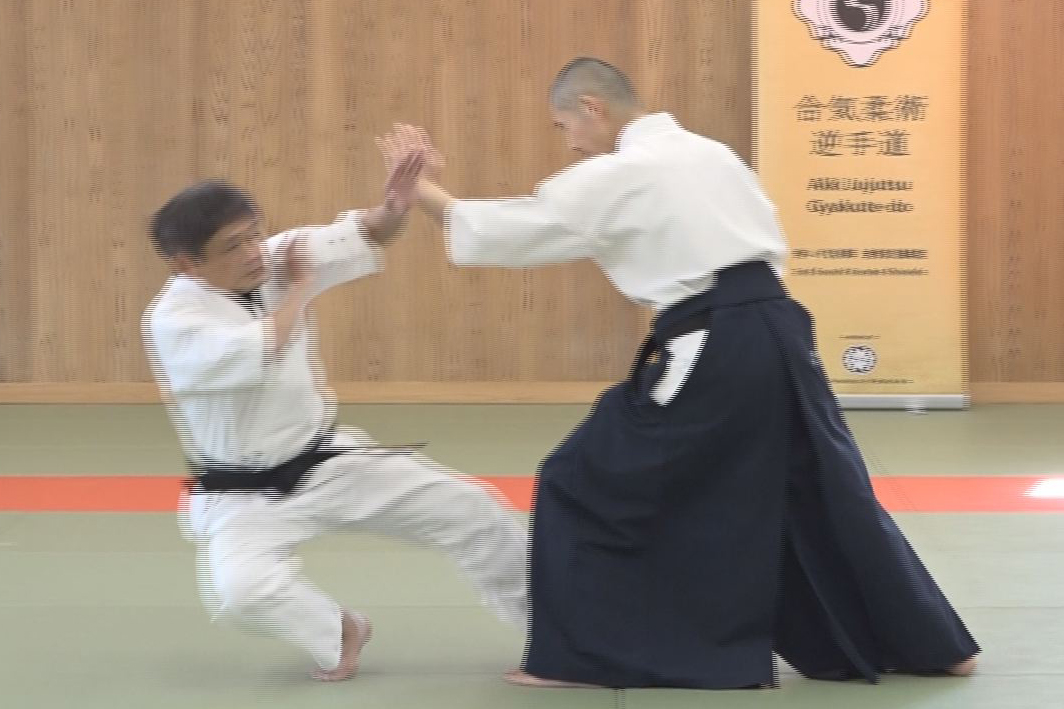
【AIKI Web Course Part 2】Lesson 1 – The Explanation of Waving Method
-
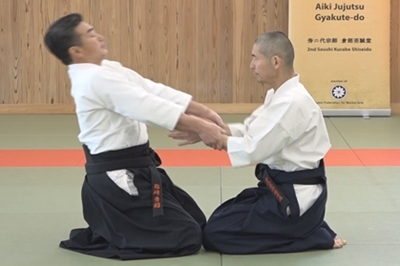
【AIKI Web Course Part 2】Introduction with video


